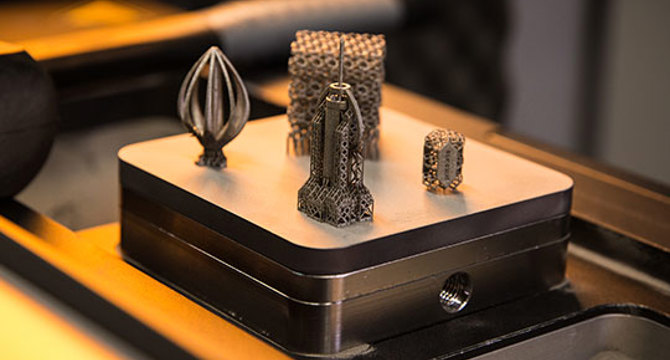Heat Treatment for Additive Manufacturing
Heat treatments can further improve final part properties such as hardness, elongation, and fatigue strength.

Why is Heat Treatment Important?
Often, when parts are 3D-printed, the process of differential heating and cooling introduces internal stresses as each layer becomes fused to create the part. The build undergoes contraction and expansion that can lead to cracking, warping, or in the worst-case scenario, failure due to pressures exerted on them when used in the final product. Heat treatment changes the microstructure of the part, yielding improved mechanical properties, such as strength, hardness, and fatigue resistance.
Types of Heat Treatment for Additive Parts
There are four technologies that use heat to improve 3D-printed parts. The choice made regarding which one to use is based on geometry, material, and the intended application.
Stress Relief
This helps all those atoms that make up your part align in a more "comfortable" way. The key is heat, which warms the part enough to rearrange any off-putting interactions between layers. Stress relief works well when printing all of the materials we offer, except for cobalt chrome (CoCr).
Hot Isostatic Pressing (HIP)
Not surprisingly, this process uses a combination of heat and pressure to reduce internal microporosity. Even DMLS parts, which achieve nearly 100% density right out of the printer, can benefit from HIP to remove even more residual stresses. Fused Deposition Modeling (FDM) parts, too, can benefit from HIP to close internal pores. HIP is most commonly used on Inconel and stainless steel 17-4 PH.
Solution Annealing
Solution annealing is another heat treatment option for production-grade parts that require enhanced mechanical properties. The process heats the workpiece to a high temperature and then it's rapidly cooled, resulting in a change in microstructure and improved ductility. It's most often used for aluminum parts.
Aging
Also called H900 aging, this process strengthens parts by exposing them to high temperatures, allowing for changes in the part's microstructure. Any imperfections in a metal part's lattice are more firmly set in place due to the heat, improving hardness and tensile strength.
Design Guidelines for Heat Treated 3D-Printed Parts
One way to avoid unwanted stress in your parts is to design rounded corners—fillets—which help smooth out the parts right from the start. While heat treatment reduces stresses, you should know that it does affect the grain structure of the material you've chosen to print. As mentioned above, be aware that not all materials are suitable for heat treatment. Our applications engineers can help guide you.
Related Resources








